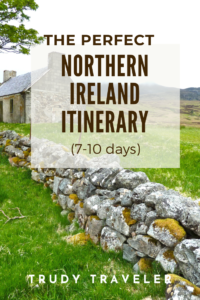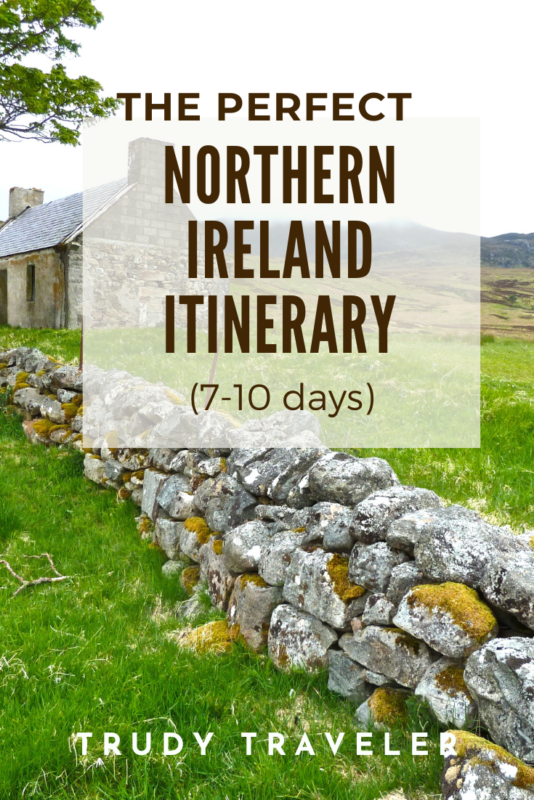
Planning a Northern Ireland Itinerary
Ireland and Northern Ireland have a rich history, culture, and coastal beauty. With so much to see on one island, most travelers select a northern or southern itinerary. This post focuses on a northern route.
Popular sites in Northern Ireland include the Titanic Belfast museum, the Belfast murals, and the Giant’s Causeway. Ireland sites include the Cliffs of Moher, Galway, and Dublin. There are many popular attractions in Dublin, including the Guinness Storehouse, Jameson Distillery, St. Patrick’s Cathedral, and the Trinity College Library.
The Emerald Isle
The Emerald Isle, known for its bright green color, is located off the west coast of the United Kingdom. The Republic of Ireland, commonly known as Ireland, and Northern Ireland are located on the Emerald Isle. In total, the two regions cover 32,595 square miles.
The Republic of Ireland covers 27,133 square miles, and Northern Ireland covers 5,456 square miles of the island. Dublin is the capital of the Republic of Ireland, and Belfast is the capital of Northern Ireland. Many travelers may not realize that Northern Ireland is part of the United Kingdom and not just a region of Ireland.
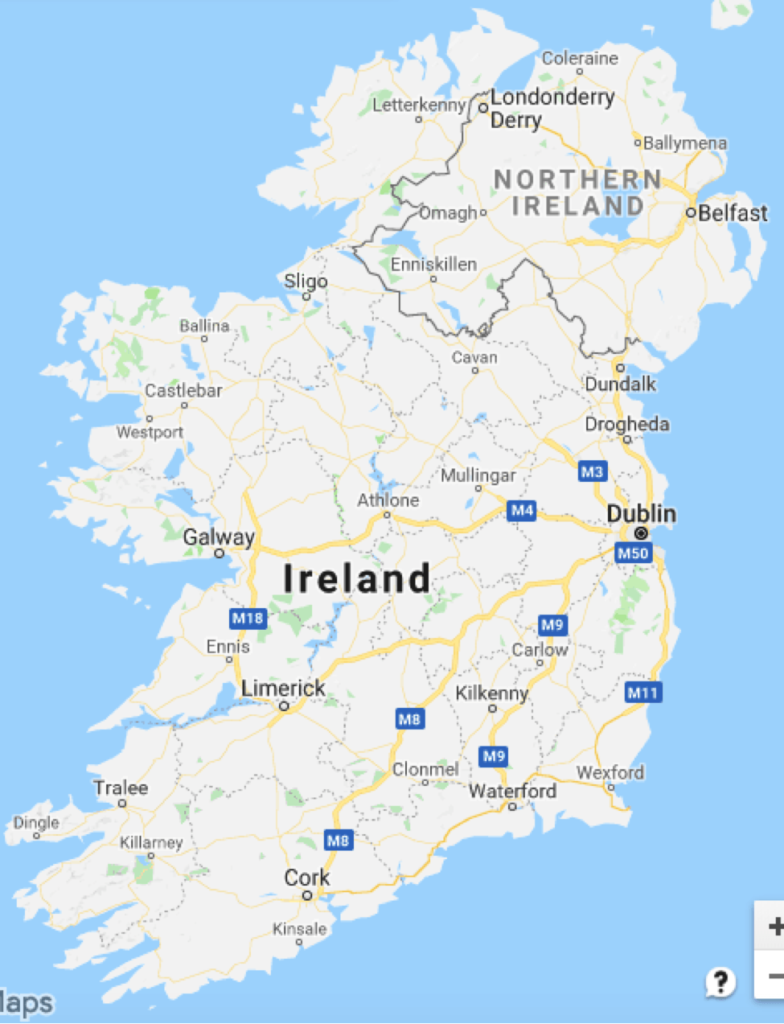
Currency
Travelers should be aware that Northern Ireland and Ireland use different forms of currency. Northern Ireland’s currency is the pound, and Ireland’s currency is the Euro. Travelers can easily access local currency through ATMs or banks in each region.
How Many Days for a Northern Ireland Itinerary?
As mentioned above, a Northern Ireland itinerary combines stops in Northern Ireland and the northern region of the Republic of Ireland. A northern itinerary can be completed in 7 days. Although an 8-10 day itinerary provides more time to see everything on your list.
Ireland Itinerary Day 1 and 2: Arrive in Dublin or Belfast
For a Northern Ireland itinerary, travelers can fly into Dublin or Belfast. Flying into Belfast will save you a two-hour drive from Dublin. If you are considering a 7-day itinerary, flying directly into Belfast and departing from Dublin is a time-saving option.
Depending on the arrival time, one day in Belfast may be enough. We arrived in Ireland mid-afternoon. By the time we drove to Belfast, it was early evening, and it was too late to see anything. With an early start on day two, it left minimal time to enjoy Belfast.
For travelers flying into Dublin, upon arrival, you’ll pick up your rental car near the airport and begin your adventure. Driving in Ireland can be intimidating for those who haven’t driven in the left lane or from the right-hand side of a car. For tips on renting a car and driving in Ireland, check out “Everything You Need to Know Before Traveling to Ireland“.
Exploring Belfast
Belfast is an up-and-coming tourist stop with its rich history, shopping, and trendy food culture. A hop-on-hop-off bus can be a great option for travelers to see multiple sites in a day or two.
Titanic Belfast

The Titanic Belfast Experience, named the best tourist attraction in the world, is a must-see on any Northern Ireland itinerary.

The RMS Titanic’s history began in Belfast in the early 1900s. It was the largest passenger ship of its time.
The exhibit includes nine galleries featuring authentic reconstructions and interactive exhibits. It begins with a depiction of the Belfast shipping industry, its construction, the maiden voyage, and present-day exploration. This amazing exhibit should be at the top of any Northern Ireland itinerary.
St. George’s Market
St. George’s Market dates back to the 1800s and is open Friday through Sunday. This famous market is known for its wide array of fresh produce, baked goods, books, antiques, and other artisanal products. It is a must-see on your Northern Ireland itinerary.
Belfast Peace Wall and Murals

Throughout Belfast, travelers can see artistic reminders of its troubled past. A variety of tours share the history of the Peace Wall and the murals with interested visitors.
Ireland Itinerary Day 2 & 3: Causeway Coastal Highway, Bushmills, & Derry
Travelers have multiple options when driving from Belfast to the Bushmills area. Many popular attractions are located in the area, including the Carrick-a-Rede Rope Bridge, Giant’s Causeway, and the Bushmills Distillery.
The quickest route is the M2/A26. Depending on traffic, this route will take between 1 and 1.5 hours. The scenic route is the Causeway Coastal Highway, which travels along the Northern Ireland coast and can take up to 2.5 hours.
Driving out of Belfast, we were focused on adjusting to driving in Ireland. I typed in our destination and did not notice the route our GPS app had selected. It wasn’t until we were three lanes over and passing the Causeway Coastal Highway exit that I realized there were multiple routes. Lesson learned travelers, double check you have the correct route before heading out.

At that point, we cut our losses. As any good traveler, we went with the flow and continued our route. In the end, the quicker route was probably better as we drove for 5 hours that day.
Giant’s Causeway

The Giant’s Causeway is a must-see on your Northern Ireland itinerary. It is comprised of 40,000 hexagonal-shaped basalt columns that cascade into the Atlantic Ocean. The pillars date back to around 60 million years ago and are magnificent.

Visitors can listen to an audio story about the Irish giant Finn McCool as they walk from the visitor center down to the causeway. Legend has it that Finn McCool placed the hexagonal stones to reach his rival Benandonner in Scotland.
In addition to the rock formations, the Giant’s Causeway also has a variety of trails and other formations worth exploring.

Carrick-a-Rede Rope Bridge
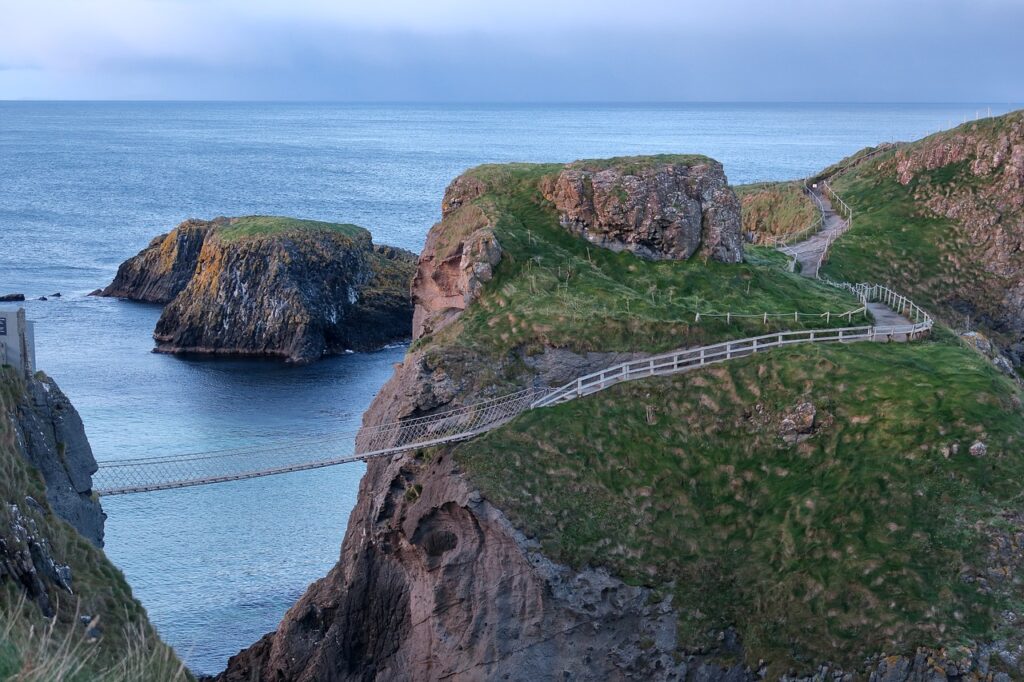
In 1755, Salmon fishermen built the Carrick-a-Rede Rope Bridge. The bridge spans 65 feet (20 m) across and is suspended almost 100 ft. (30 m) above the ocean. This is a popular attraction for visitors, and there is often a line of visitors waiting to cross.
Old Bushmills Distillery

The Old Bushmills Distillery is a popular stop in Northern Ireland. It was granted a license to distill in 1608, making it the oldest licensed whiskey distillery in the world. Tours and tastings are open daily to visitors.
Derry/Londonderry
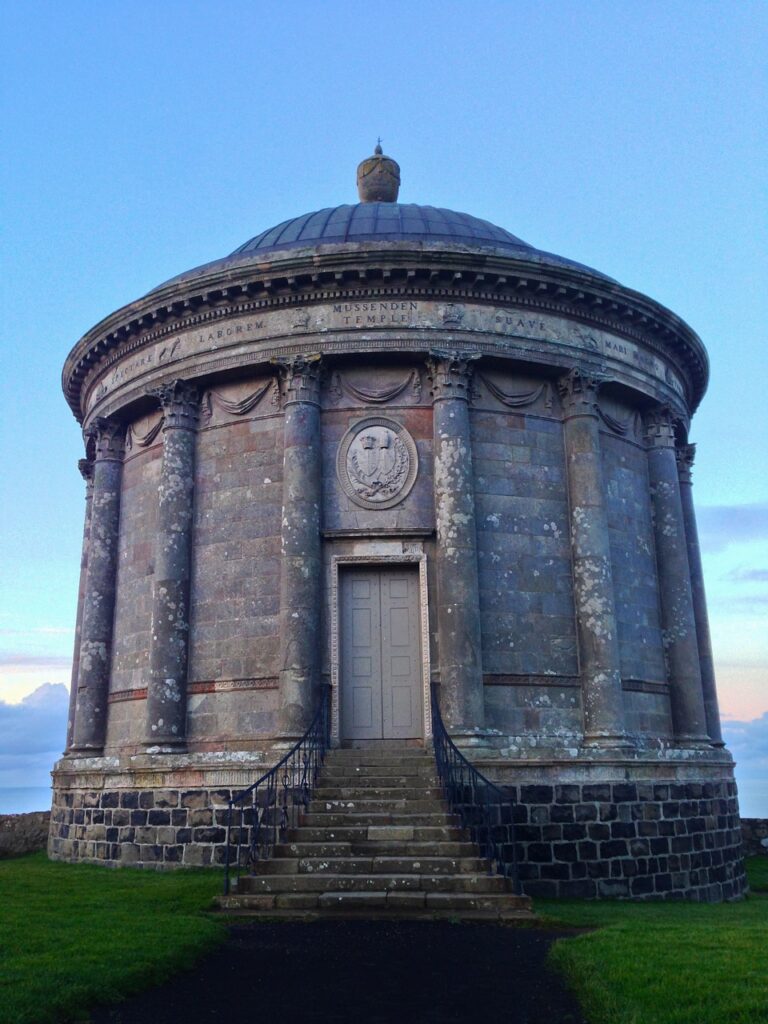
After a long day of exploring, grab dinner and spend the night in Derry. It is also known as Londonderry and is about a 1-hour drive south of Bushmills.
Derry is the only completely walled city in Ireland with its rich history and culture. This is a great stopover before driving south to Ireland.
Ireland Itinerary Day 4: Sligo or Galway
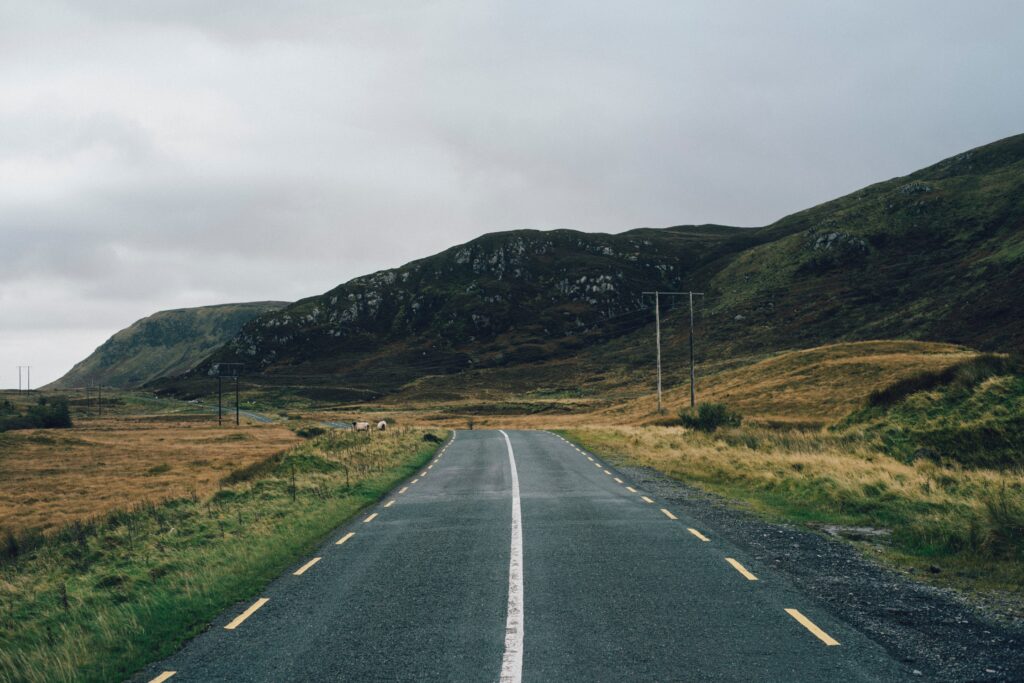
After finishing up the Causeway Coastal Route in Derry, you’ll drive south from Northern Ireland in the United Kingdom to Ireland. You have multiple options depending on how you want to spend your day. One option is to head two hours south and spend time in County Sligo. Sligo is known for its surfing, seaweed baths, and gastropubs. Option two is bypassing time in Sligo altogether. Instead, travelers can bypass Sligo and head to Galway. Driving to Galway takes an additional two hours.
We spent the night in Enniscrone in the County Sligo. We had dinner at the Pilot Bar located near our hotel. This charming bar was a pleasant surprise. They had some of the best gluten-free pizza I’ve ever had. I was most excited by the tender and chewy crust. It’s worth stopping in for a bite to eat.
Downpatrick Head

Our itinerary had us staying two nights in Enniscrone, in County Sligo. The next day we drove out to Downpatrick Head outside Ballycastle village.
Downpatrick Head was the wettest and windiest part of our trip, although it was one of our favorites along our Ireland itinerary. After a short walk from the parking area to the edge of the cliff, visitors see the majestic Dun Briste, or “broken fort” in Gaelic.
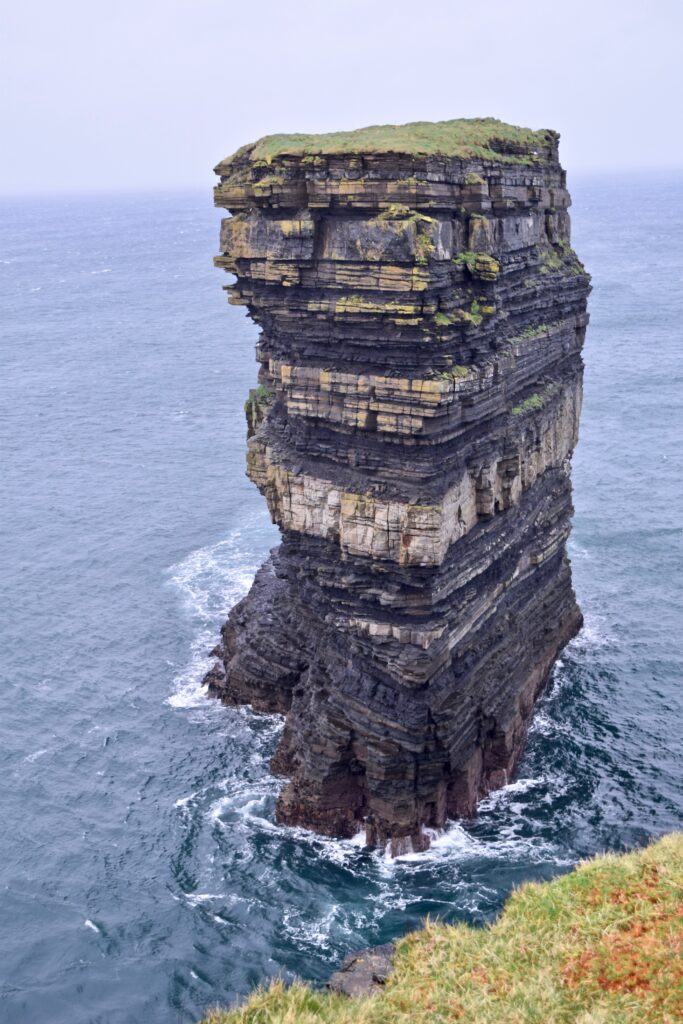
Upon reaching the end of the cliff, you’ll see the amazing and majestic sea stack rising 50 meters out of the Atlantic. They say that the sea stack broke free from the mainland in 1393.
See the video below for panoramic views of Downpatrick Head.
St. Patrick founded a church at this site. Historically, this site was an annual destination for pilgrims visiting where St. Patrick built his church. Visitors will find a statue built in honor of St. Patrick near the remnants of his church.
Ireland Itinerary Day 5 & 6: Galway

The town of Galway is one of the oldest fishing villages in Ireland and is located where the River Corrib flows into the Atlantic.
Visitors stroll through the winding cobblestone streets of the Latin Quarter and Quay Street in anticipation of what it offers. Galway’s ancient medieval walls can be seen in various restaurants, pubs, and shops. Lynch’s Castle can be seen along the cobblestone streets of the Latin Quarter. Travelers may be surprised to see that the castle is now home to an Irish bank. Odd right?

Stay the night in Galway to have plenty of time to check out the nightlife and activities in the Latin Quarter and Quay Street. Live music from street buskers and entertainers will set the soundtrack for your visit to Ireland.
The Aran Islands

Located 30 miles outside Galway Bay, the Aran Islands are the epitome of Irish culture. They can be reached by ferry or by a 10-minute flight.
The three Aran islands provide an array of different sites. Visitors may stumble upon the clear water lake or castle on Inis Oirr, the dramatic cliffs and white sand beach on Inis Meain, or the forts on Inis Mor. Inis Mor is home to Dun Aonghasa, the ancient fort, outlooking the Atlantic dating back to 1500 B.C.

The Aran Islands are a great place to experience an authentic Irish experience. They offer several lodging options, including a hotel, B&Bs, and glamping.
Ireland Itinerary Day 7 & 8: Cliffs of Moher, Dromoland, and Bunratty Castle
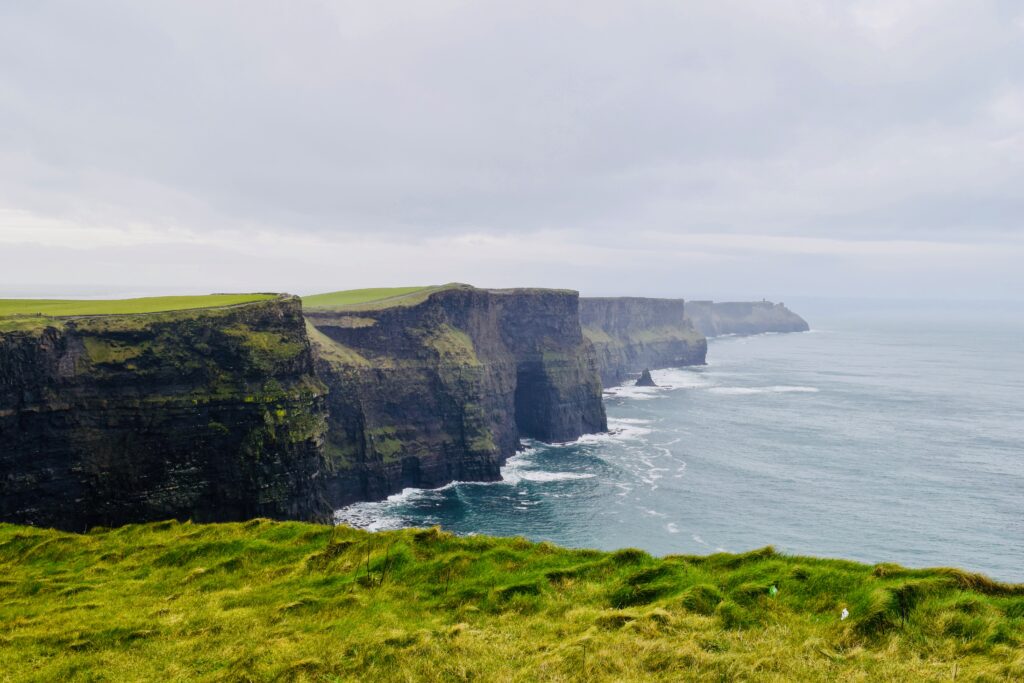
Cliffs of Moher
Get up early to beat the crowds and head out to the Cliffs of Moher. From Sligo, it takes approximately 2.5 hours to drive to the Cliffs of Moher and 1.5 hours from Galway.
The Cliffs of Moher are the most visited attraction in Ireland. Arriving before 9:00 a.m. is optimal. This allows visitors time to enjoy the Cliffs and Visitor’s Center before tour buses begin arriving.
The Cliffs of Moher are an amazing combination of history, geology, and nature along the Wild Atlantic Way. Photos cannot capture the enormity of these majestic cliffs, which rise 702 feet (214 m) above the Atlantic Ocean and span 5 miles (8 km). They are estimated to be over 350 million years old.
The panoramic view of the Cliffs of Moher is breathtaking and should not be missed. Visitors can enjoy the view from different points, explore trails, and learn more in the Visitors Center.


The Cliffs are home to over 20 species of nesting birds, including the Atlantic Puffin. I spent a lot of time trying to spot a puffin, but I did not succeed. My Irish luck did not come through that day.
This is the reason that this is the most visited site in Ireland. The Cliffs of Moher are a must-see on your Northern Ireland Itinerary.
Bunratty Castle and Folk Park
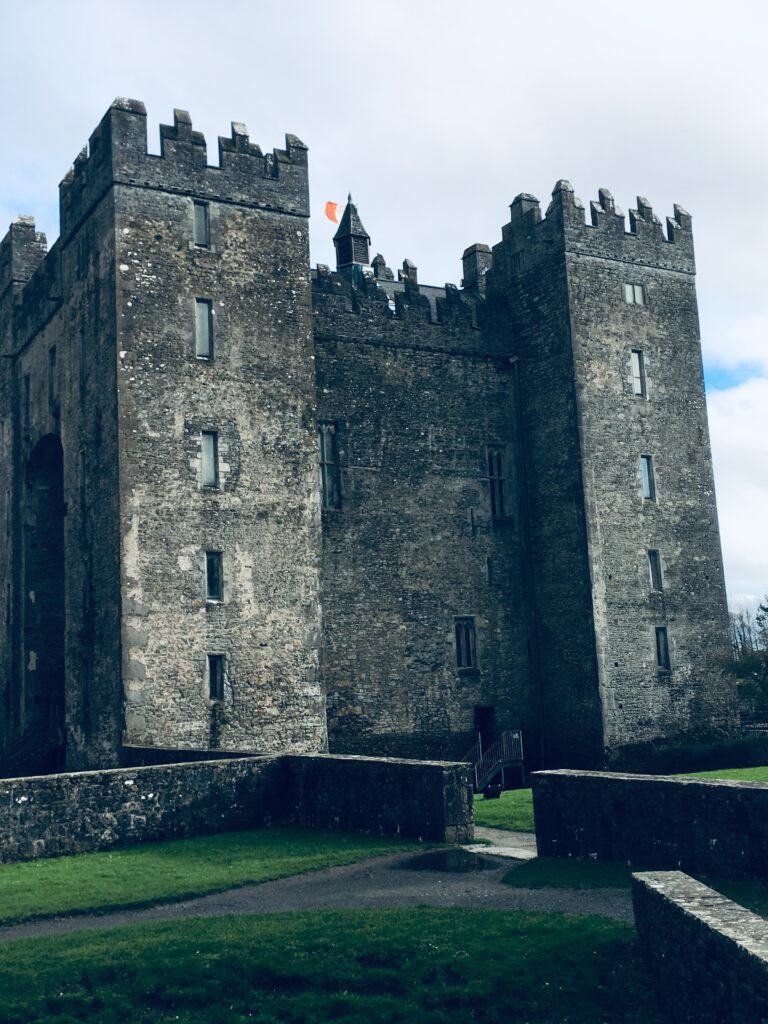
After leaving the Cliffs of Moher, travelers may want to finish off the day at the Bunratty Castle and Folk Park. The Bunratty Castle is approximately a one-hour drive from the Cliffs of Moher. This medieval castle was built in the 1400s and has furnishings based on that time period.

Bunratty Folk Park is set on 26 acres and features over 30 buildings, including rural farmhouses, village shops, and streets that are recreated and furnished as they would have appeared. This site provides visitors an opportunity to experience Ireland in years past.
Visitors can spend hours at this attraction, roaming through the 19th-century village and taking a peek at the Fairy Village and a petting farm.

Bunratty Castle and Folk Park also offer a medieval banquet for those who’ve made reservations ahead of time. This is a must-see on your Northern Ireland itinerary.
Dromoland Castle Hotel

The Dromoland Castle Hotel is located approximately one hour from the Cliffs of Moher or a 15-minute drive from the Bunratty Castle and Folk Park.
It looks like a castle out of a fairytale. One might expect a Disney Princess peeking out of its many windows.
The castle has many amenities on site, including hotel accommodations, golf, restaurants, and a variety of activities. These include carriage rides, archery, and falconry.
Visitors may choose to spend the night at the castle, grab some lunch or just stop by to enjoy its beauty. If you don’t want to stay at the castle overnight, the Inn at Dromoland is just down the street and offers a nice array of amenities.

Quin Abbey

Fifteen minutes from the Dromoland Castle is the Quin Abbey, founded in the 14th century. Visitors will appreciate the beauty and artistry of the architecture, including the stone walls and architecture. The grounds of the Abbey bring peace and solitude as visitors reflect on the history of this Franciscan Abbey.

Ireland Itinerary Day 9 & 10: Dublin

It takes approximately 2.5 hours to drive from Dromoland to Dublin. This is an easy highway drive compared to traveling on other narrow country roads of Ireland.
Dublin has many popular attractions. Your personal list of must-sees will determine how many days you want to spend there. We felt we could have seen everything in two days.
Dublin is the largest city in Ireland. With that comes lots of cars, traffic, and parking challenges. We left our rental car in the Red Cow Park-and-Ride, which was 5 minutes away from our hotel. It took approximately 20 minutes to ride the LUAS tram into Dublin. Once we saw Dublin traffic we were glad to stay outside the city.

I used the Dublin Transport App to figure out where to park and how to get in and out of Dublin. The app made it a simple process and was very easy to navigate. In addition, the app shows when the tram or bus is arriving, which is helpful in planning.
St. Patrick’s Cathedral
St. Patrick’s Cathedral was built in the first half of the 13th century and is the National Cathedral of the Church of Ireland. St. Patrick’s Cathedral is built on the site where St. Patrick, himself, fetched water from a well as early as 450 A.D.
The architecture of St. Patrick’s Cathedral is stunning. Similar, to some other sites in Ireland, words and photos cannot capture the beauty and feel of the cathedral. This is a must-see on your Northern Ireland itinerary.
St. Patrick’s Cathedral is open and offers services 7 days a week.


Christ Church Cathedral

Christ Church Cathedral is the oldest building in Ireland and has been drawing in pilgrims for almost 1,000 years. Founded in 1028, the cathedral continues to offer services 7-days a week.
The cathedral is one of Dublin’s most visited attractions. It is also home to the largest medieval crypt in Ireland, and many ancient relics.
Book of Kells and Trinity College Library

The Book of Kells Exhibition and Trinity College Library is a must-see for visitors. The Book of Kells is coined Ireland’s greatest cultural treasure. The 9th-century manuscript, written in Latin, documents the four Gospels of the New Testament. It is reported that the Book of Kells was documented by Celtic monks around 800 A.D.
The Trinity College Library’s Long Room was built sometime between 1712 and 1732 and is home to 200,000 books. The library with its ornate barrel ceilings is considered one of the most beautiful libraries in the world.
The Long Room’s shelves were already full by 1850. It was in 1850 that the ceiling was raised to accommodate the upper-level bookcases.

The two levels of bookshelves tower over visitors who stand in awe of the Long Room’s beauty. The rich smell of the ancient books and the beauty of the wooden architecture leaves visitors strolling through trying to absorb all that lies within its walls.
The Trinity College Library is stunning and a must-see on your Ireland itinerary.
Guinness Storehouse

The Guinness Storehouse, famous for its dark stout beer, is currently Dublin’s #1 attraction. The Guinness tours, bars, and restaurants make it a popular attraction. Visitors may want to consider booking tickets ahead of time as lines can be long.
The self-guided tour takes visitors through the history of Guinness, the brewing process, and how to pour a perfect pint. Visitors should not miss the amazing view from the 360 Gravity Bar while enjoying a delicious pint.
Jameson Distillery

The Jameson Distillery is an interactive guided tour. The tour shares the Jameson Distillery’s history and its role throughout Dublin’s history. The next step is learning about the ingredients and distilling process. The tour ends with a tasting of different types of whiskey and a bonus free drink at the end.
I thought this tour might be a little boring. However, I am happy to report that it was engaging, amusing and informative.
Book the trip!
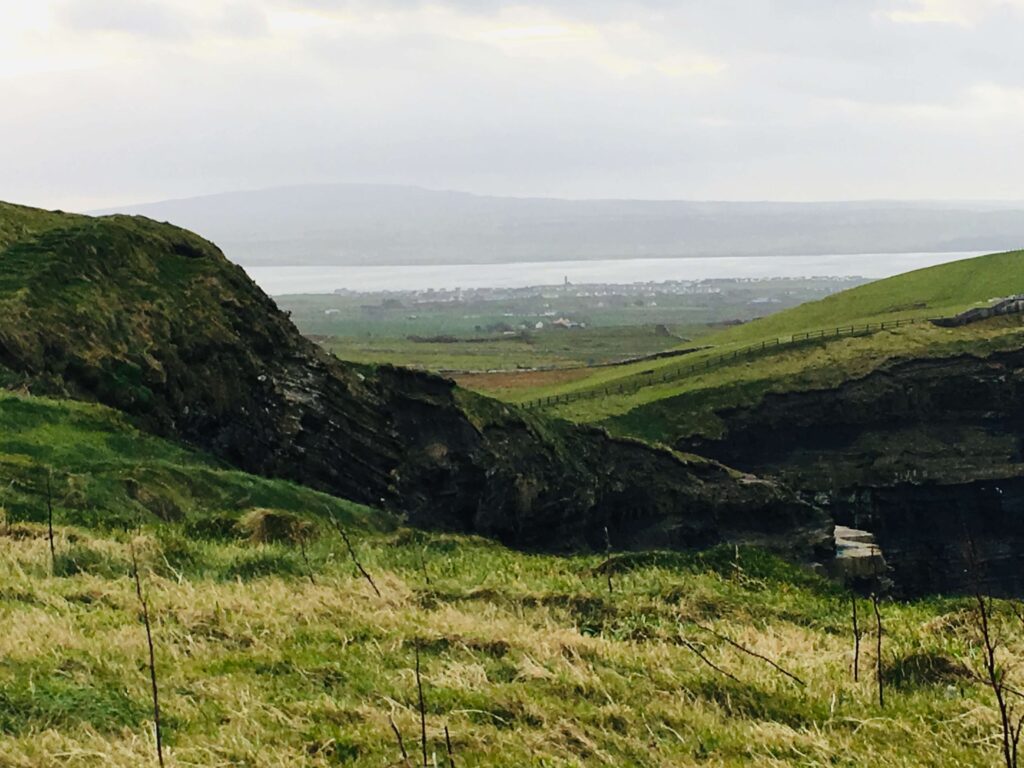
A Northern Ireland itinerary is packed full of natural beauty, Irish culture, and rich history. This is an easy route for travelers to tailor to their own liking and timelines.
Add Ireland to Your Bucket List
Coming from a very Irish family, I was excited to visit Ireland, although I have to admit, it was much more than I expected. We loved Ireland and already want to go back. Add Ireland to your bucket list. You won’t be disappointed!
Don’t forget to follow Trudy Traveler on PINTEREST, and you can save the pin for later!
